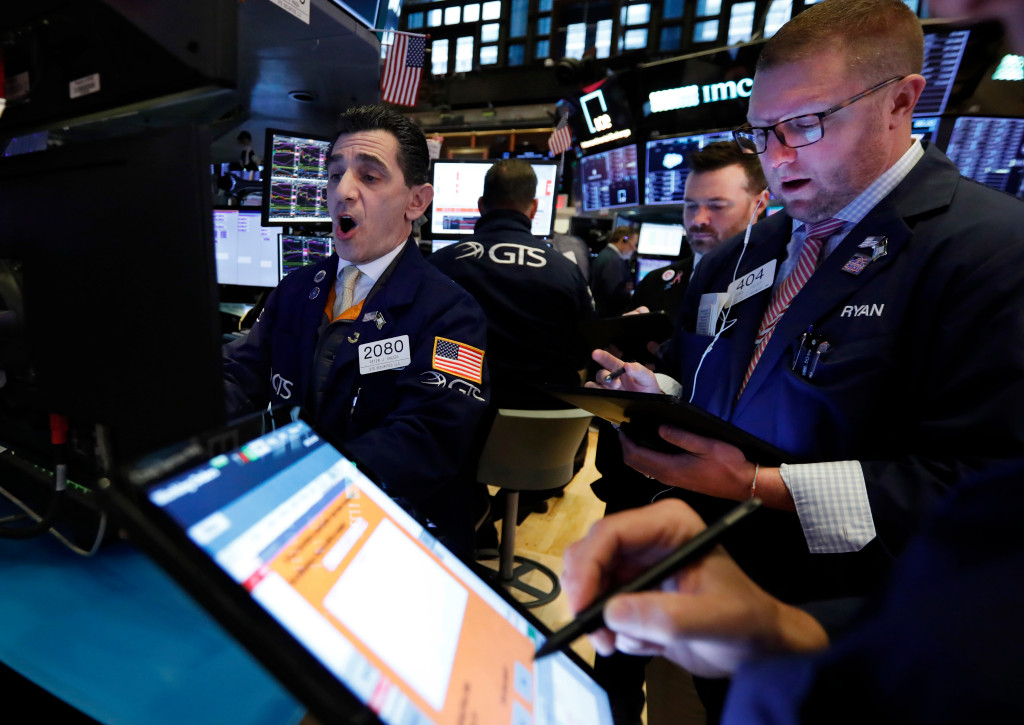“Bubble Watch” digs into trends that may indicate economic and/or housing market troubles ahead.
Buzz: Coronavirus fears hammer stocks as investors fret a global economic slowdown is brewing. Everything from Chinese factories to international flights to Tokyo Disneyland has been shuttered to stem the virus’ spread. And there’s a shrinking interest in travel.
Source: Media reports.
The Trend
The Standard & Poor’s 500-stock index fell 7.7% for February. The last time this U.S. stock benchmark fell more in a month was December 2018. It’s the third biggest drop in 11 years.
The Dissection
The stock market can have a mind of its own. But when it drops sharply, it’s usually not good news for California’s economy.
I plugged into my trusty spreadsheet three decades worth of S&P results, statewide job data and Southern California real estate figures back to 1990 to see what happened to hiring patterns and home pricing a year after large stock drops.
Traders, more often than you think, react logically to economic swings, both good and bad. And uncertainty, like the unknown impact of a global virus, can further depress share prices.
Many major employers are part of publicly owned companies with management that often has to react to stock swings. These corporations can become financially conservative when investors are antsy. And if those reactions mean fewer hires, if not layoffs, then there are fewer house hunters. And those remaining shoppers won’t readily pay up for real estate.
I found the 25 worst months for the S&P 500 starting in 1990. Then I looked at how California jobs and Southern California housing fared one year after these significant stock drops.
We are talking about rough times for stocks. As measured by the S&P index, these 25 months averaged a 8.5% drop — with the biggest decline, 16.8%, coming amid the financial meltdown of October 2008.
And these steep dips signaled broader trouble ahead.
In the year after these 25 horrible months for stocks, California employers cut jobs by an average 1.2%. In the same periods, Southern California home appreciation was nearly halved, shrinking on average by 5.4 percentage points to 5.8%.
Compare that lack of hiring and real estate weakness with how the region’s economy reacted after the best 25 months for stocks over three decades. In these bullish periods, stocks averaged 7.9% gains, with the largest upswing of 11.2% coming as the early 1990s recovery brewing in December 1991.
One year following the 25 great months for stocks, California averaged employment growth of 1.1% while Southern California home appreciation grew by 1.7 percentage points to 8.9%.
How bubbly?
On a scale of zero bubbles (no bubble here) to five bubbles (five-alarm warning) … FOUR BUBBLES!
The grand “bubble or not” question is often driven by “What will make it burst?”
This week we witnessed how a whiff of a possible global pandemic quickly turned investor sentiment into a stock market disaster. Only 5% of the months since 1928 have had larger declines than the 7.7% walloping the S&P index saw in February.
And you also can see how far those Wall Street fears can spread — often to the California job market and Southern California real estate.
Yet a stock market thrashing does not always mean layoffs or a housing sell-off. One year after stocks’ biggest dives, my spreadsheet says 68% of the time job cuts soon followed. And in 60% of the instances, home appreciation cooled.
History is a guide, not a guarantee. But it certainly hints at rough times ahead.










